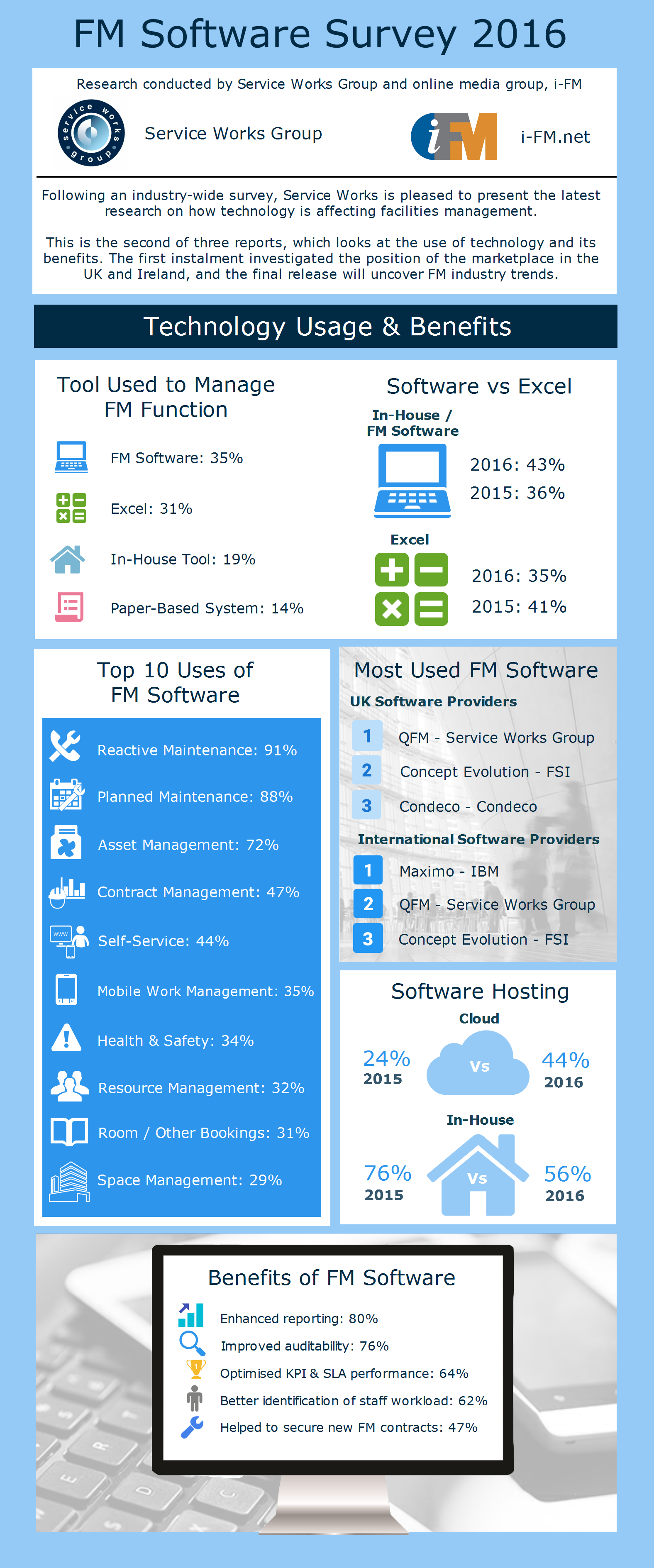The facilities management industry is embracing the benefits of technology to effectively manage their FM operations, new research reveals. Based on findings from the FM Software Survey 2016, run in conjunction with online media group, i-FM, this is the second report released looking at how technology is affecting facilities management. The first investigated the position of the FM marketplace in the UK and Ireland, and the final report due to be released later this month will uncover FM technology trends. See our infographic below for an overview of the results. A summary infographic will follow soon to highlight the key findings across all three areas.
This report, Technology Usage & Benefits, shows a snapshot of a technology-savvy industry with the majority of respondents stating that they were using facilities management software, either from a key industry provider or developed in-house. However, a percentage across all sectors (including public, private and FM service providers) reported using either Excel or a paper-based system but many were also consulting the market for a new solution. The results below show that FM software is growing in popularity compared to Excel, with an increase in usage of 7% since 2015. As well as the rich functionality available in a CAFM system which allows more efficient, cost effective facilities management, respondents stated they have found the main benefits of their software to be enhanced reporting and increased auditability, which are far superior and secure than using Excel spreadsheets. For more information and a comparison between an FM system and Excel, request our white paper: “Excel to FM Software: Making the Transition.”
Planned, reactive maintenance / help desk and asset management have been consistently popular tools among FM software users, but this year has seen a sharp rise in popularity of self-service, which will be looked at in more depth in our final report. As facilities management becomes more of an organisational commodity, taking additional responsibility for the productivity and retention of the workforce, utilising a self-service FM function is becoming essential. By empowering staff, customers and operatives across the organisation to log, track and manage maintenance requests themselves, via web-based CAFM tools, work can be reported more quickly, prioritised centrally, and completed by an engineer within a managed timeframe.
Other FM challenges as well as the industry’s opinions on upcoming technology trends will be uncovered in our final report, released later this month. If you would like the results of this to be sent to you directly, please register your details here.


 Australia
Australia



